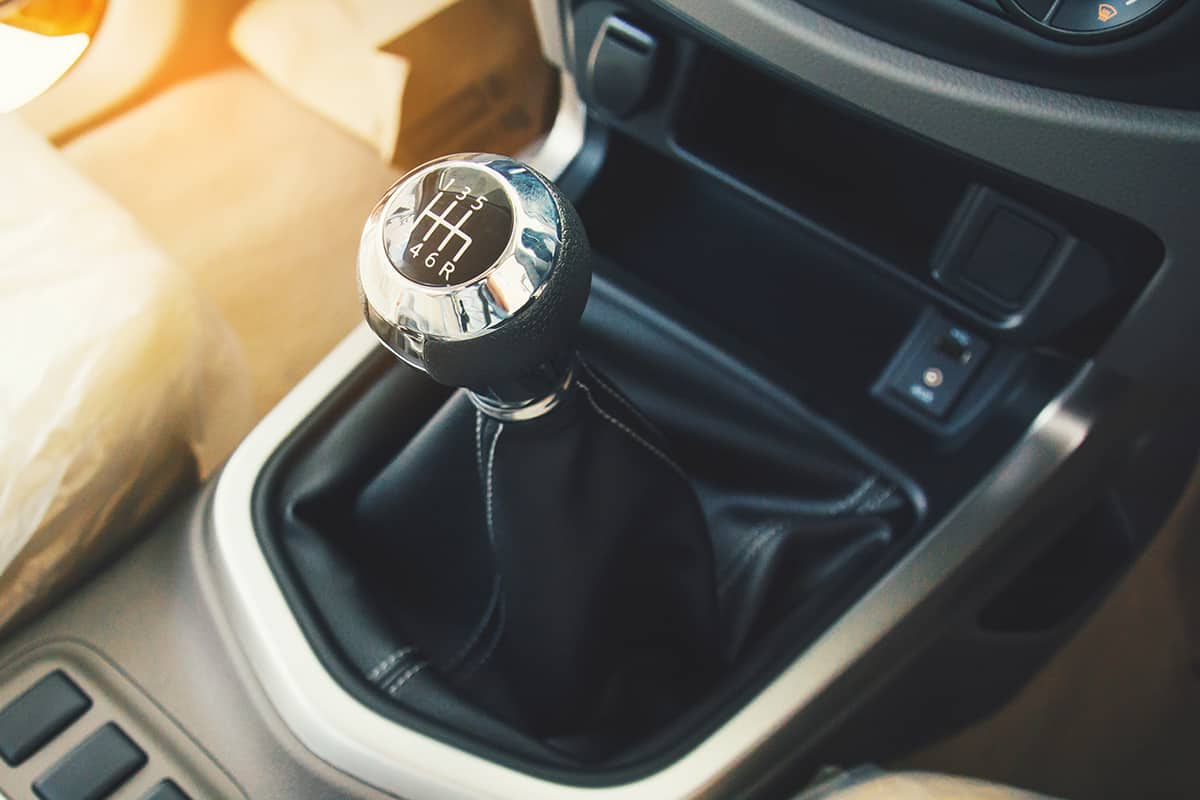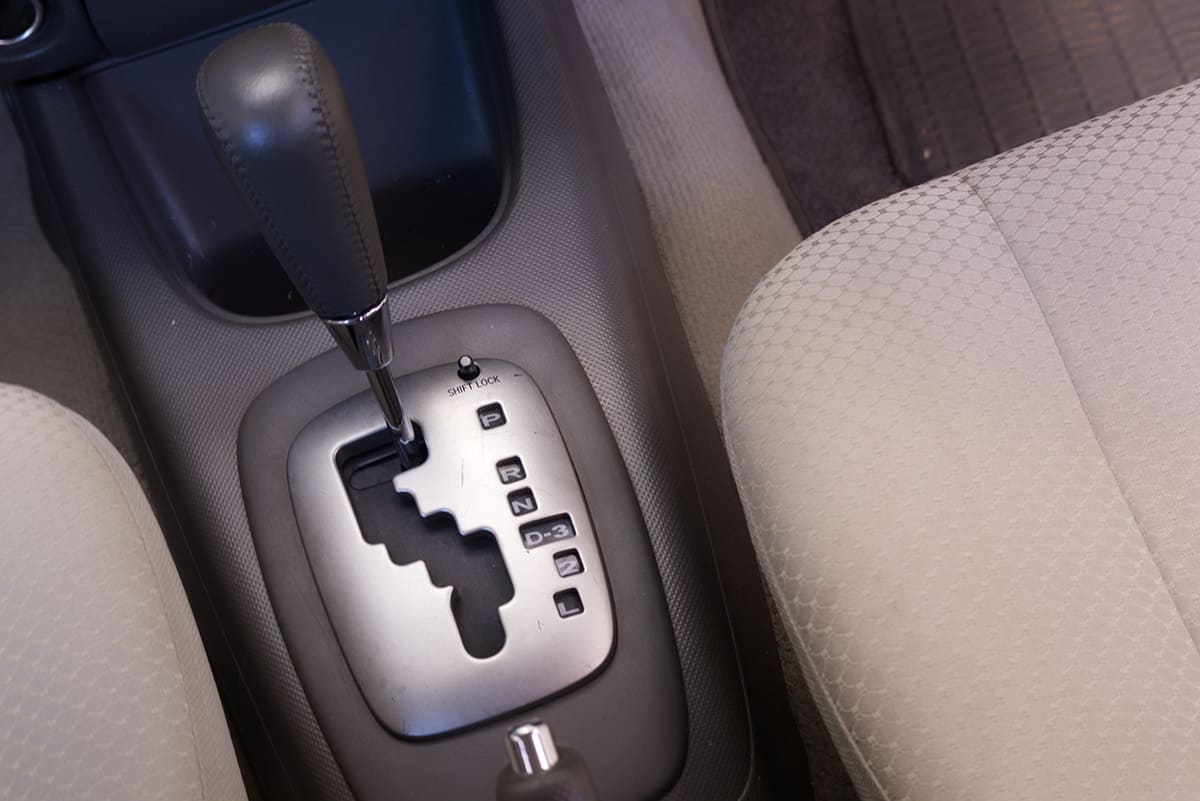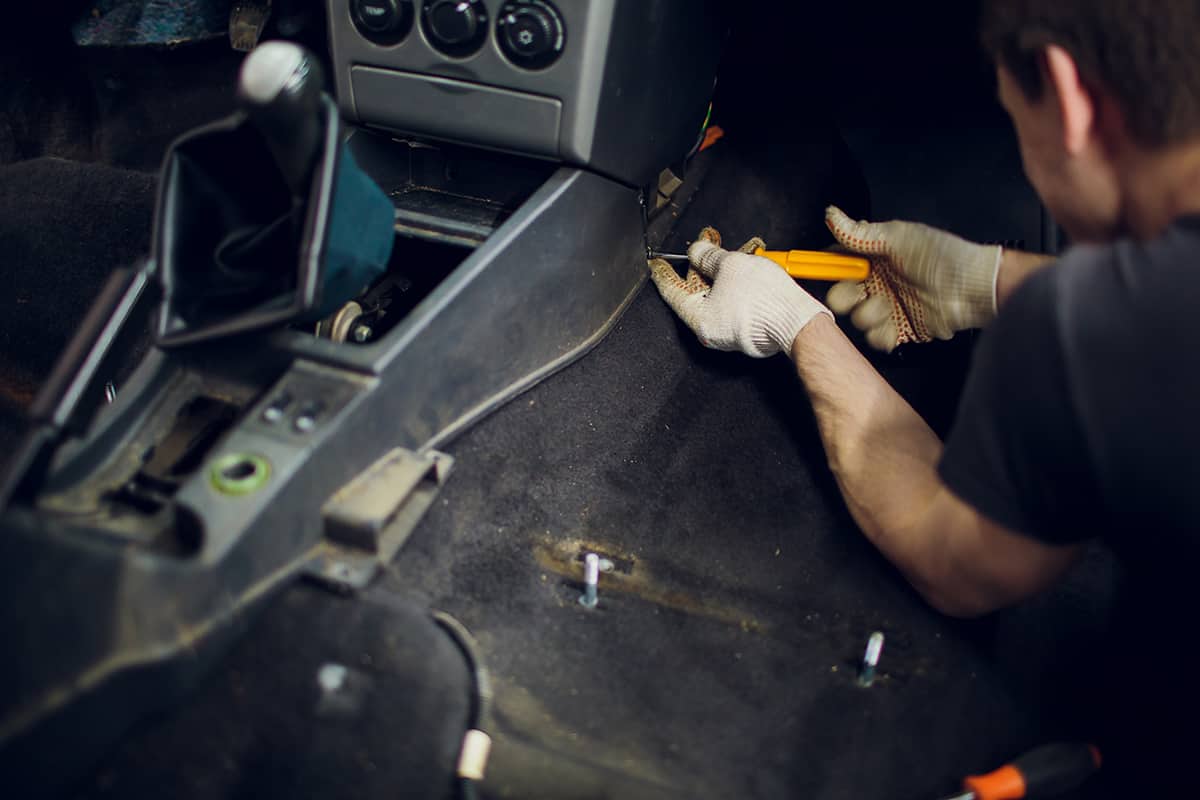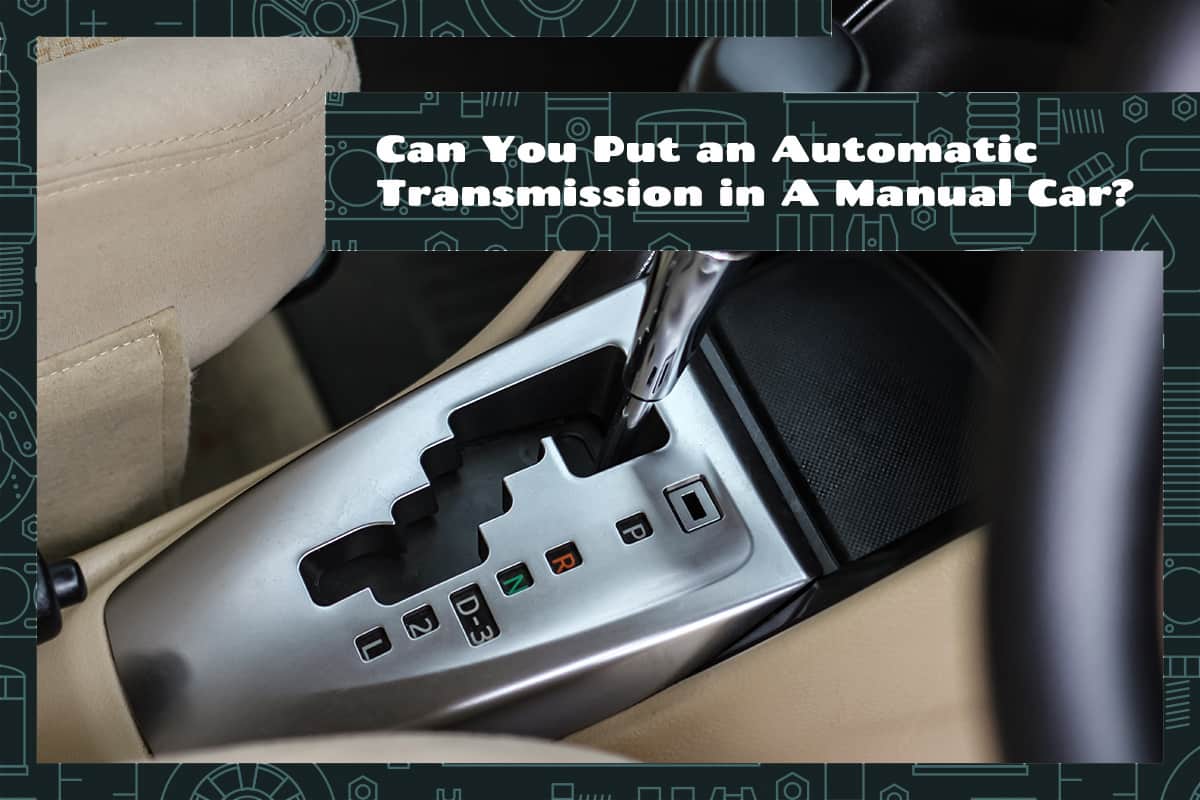The world of automobiles is vast and intriguing, filled with countless components that make our vehicles run smoothly. One of the key elements of a car is the transmission, a complex piece of machinery that allows power to be transferred from the engine to the wheels, and lets us control the car’s speed and power.
Traditionally, there have been two types of transmissions: manual and automatic. However, the question often arises, particularly among those with manual vehicles, if it’s possible or even advisable to change a manual transmission to an automatic.
Yes, it is technically possible to put an automatic transmission in a car that initially has a manual transmission. The process, known as a transmission swap, can be complex and expensive, with costs generally ranging from $1,500 to $5,000, depending on the specifics of the vehicle and the parts involved.
Below, we’ll take a closer look at what the process of transitioning from a manual to an automatic transmission entails. We’ll discuss the technical aspects, the general process, and alternatives to a full transmission swap.
Understanding Car Transmissions
The transmission pumps power from the engine to the wheels, enabling the car to move. This transfer of power is achieved through gear ratios, shifting up when acceleration is needed and down when less power or more torque is required. Transmissions are critical because, without them, the engine’s power would not be effectively used, leaving your vehicle incapable of moving.
Manual Transmission

Manual transmissions, also known as stick-shifts, give drivers direct control over gear changes. Drivers use a clutch pedal and a gear stick to manually shift gears based on driving conditions. These transmissions are often lauded for the control they offer and are typically more fuel-efficient than automatic transmissions. They also tend to be cheaper to maintain and repair due to their less complex build.
Automatic Transmission

Automatic transmissions eliminate the need for manual gear changing. They use a torque converter, sensors, and hydraulic fluid to automatically shift gears based on speed and engine load. This leads to a more comfortable and smoother driving experience, especially in stop-and-go traffic or on steep hills.
Transitioning from Manual to Automatic
A transition from a manual to an automatic transmission involves a process known as a transmission swap. This process, while technically possible, is complex and requires careful consideration.
Why Consider Swapping a Manual Transmission for an Automatic?
There are several reasons why car owners consider swapping their manual transmissions for automatic ones:
- Ease of use: Automatic transmissions provide a smoother, more relaxed driving experience without the need to manually shift gears.
- Driving conditions: In stop-and-go traffic or on steep hills, an automatic transmission is more convenient to use.
- Physical limitations: For drivers with physical limitations, an automatic transmission can be easier to handle.
- Resale value: Cars with automatic transmissions often have a higher resale value.
Feasibility of Transmission Swap
Some car models have been designed to accommodate either a manual or automatic transmission, making the swap process relatively straightforward. For others, the swap can be more challenging.
Here are some key considerations:
- Car model: Some cars, especially older models, may not have enough space to accommodate an automatic transmission. In such cases, significant modifications may be required.
- Engine compatibility: The engine must be compatible with the new automatic transmission. Some engines are designed to work with specific transmissions and may not function optimally with a different type.
- Additional components: An automatic transmission requires other components such as a new torque converter, shift linkage, or transmission cooler. These components add to the complexity and cost of the swap.
- Computer system: Modern cars use computer systems to control automatic transmissions. If your car’s computer system doesn’t support automatic transmissions, a software update or a new computer system may be required.
The Process of Transmission Swap

The process of swapping a manual transmission for an automatic one involves several steps, from initial planning and preparation to the actual swapping process. This procedure is complex and requires mechanical expertise.
Preliminary Steps
Before embarking on the swap, it’s crucial to plan carefully and ensure you have the necessary resources:
- Vehicle assessment: Consider the make, model, and age of your car, as well as the compatibility of your engine with an automatic transmission.
- Budgeting: Determine the total estimated cost, taking into account the price of the automatic transmission and other components, as well as labor costs.
- Sourcing parts: Find a reliable source for the automatic transmission and other necessary components. These parts can be new or used, but they should be in good condition.
Selecting the Right Automatic Transmission
The type of automatic transmission you choose should be compatible with your vehicle and fit within your budget. When selecting a transmission, consider:
- Compatibility: The transmission should be compatible with your vehicle’s engine and computer system.
- Condition: Whether new or used, the transmission should be in good working condition. A used transmission should be thoroughly inspected before purchase.
- Type: There are different types of automatic transmissions, such as conventional, continuously variable (CVT), and dual-clutch transmissions (DCT). The choice depends on your driving style, performance expectations, and budget.
Process of Swapping Transmissions
Once you’ve planned and gathered all the necessary components, the actual swapping process can begin. This process can be extremely complex, as shown in this video.
It can be summed by the following:
- Removing the manual transmission: The first step is to remove the existing manual transmission. This task involves disconnecting it from the engine and drivetrain, which requires technical knowledge and specific tools.
- Installing the automatic transmission: Once the manual transmission has been removed, the automatic transmission is installed. This involves connecting it to the engine, drivetrain, and possibly the vehicle’s computer system.
- Adding other components: Additional components, such as a new torque converter, shift linkage, or transmission cooler, are installed.
- Testing: After the new transmission and other components are installed, the vehicle is tested to ensure everything is working correctly.
Alternatives to a Full Transmission Swap
While transitioning from a manual to an automatic transmission can achieve certain driving preferences or needs, a full transmission swap can be time-consuming, costly, and technically complex. Fortunately, there are viable alternatives that car owners can consider to enjoy some benefits of automatic transmissions without undergoing a full swap.
Semi-Automatic Transmission
A semi-automatic transmission offers a middle ground between manual and automatic. It allows the driver to manually shift gears without using a clutch pedal, typically by simply pushing the gear lever forward or backward or using buttons or paddles on the steering wheel. Semi-automatic transmissions provide more control than a fully automatic transmission, yet they remove the need for a clutch pedal, which is often the hardest part of driving a manual car.
Automated Manual Transmission
An Automated Manual Transmission (AMT), also known as a clutchless manual, uses sensors, actuators, and processors to automate the clutch and gear functions. This option offers a more cost-effective and simpler-to-install alternative to a full automatic transmission. The driver can switch between manual mode (with the convenience of not operating a clutch) and fully automatic mode, based on their preference.
Continuously Variable Transmission (CVT)
A Continuously Variable Transmission (CVT) is another alternative that provides a seamless acceleration experience without the noticeable shifts in gear ratios. CVTs can provide better fuel efficiency than traditional automatic transmissions. However, they may not offer the same level of driver engagement or power performance associated with manual or conventional automatic transmissions.
Purchase or Lease a Car with an Automatic Transmission
Sometimes, the simplest alternative might be to purchase or lease a vehicle that already comes with an automatic transmission. This option could save you from the potential complications and costs associated with a transmission swap.
Even though there will be costs associated with acquiring a new vehicle, it may ultimately be a more cost-effective and efficient solution, particularly if the vehicle you’re considering swapping transmissions on is older or has other significant repair needs.






